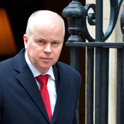For the first time since becoming Labour leader, Keir Starmer faces a range of doubters in his party and across the media. Despite Britain’s terrible pandemic death rate, as the vaccine rolls out, the last six published polls collated at BritainElects.Com have the government in the lead. And suddenly, a fashionable question becomes whether Starmer is up to the job.
Most opposition leaders endure such frenzies and they are noisier now with social media. Even so, the worry for Starmer is that this question was never posed starkly of the two Labour leaders that won an election from opposition. In the build-up to the 1964 and 1997 elections, Harold Wilson and Tony Blair were widely seen as the next prime minister. In the Labour Party and beyond, the accepted portrayal of them was as winners, and that projection fed on itself. Internal dissent was minimal and even Tory-supporting newspapers paid homage.
What those two election-winning leaders prove is that leadership in opposition is an art form, not a science. A successful Labour leader of the opposition is closer to being a mesmerising magician. Starmer has only been an MP since 2015, after a legal career that goes much further back. His speedy rise to the top in politics means he now has to discover the crucial arts while already leader, rather than during his ascent.
The appearance of a large Union Jack draped behind him during a recent party broadcast and in some interviews was an example of artlessness. The device was too clunky. The clunkiness is the issue, not the attempt to play the patriots’ card per se. Few from any side in the media—or indeed on social media—stood back and hailed Starmer’s patriotism. They analysed critically or otherwise the use of the flag. They could see how the trick was done. The conjurer had failed.
If Starmer had opened his leadership with a focus on a clearly defined brand of patriotism, the appearance of the flag might have made sense. In his victory speech last year there might have been a section along these lines: “Patriotism, a love of our country, is indispensable in these troubled times. Most of us who go into politics do so because we care for our country. Most Conservatives are patriots, and I hope Conservatives would acknowledge we are too. The divide is over how best to improve our country—the essence of democratic politics. My patriotism means I will always offer my honest judgments on what I consider to be the best way forward for our country, and apply my long-held values to that task.”
The art is in this sort of framing. It could have made patriotism a constant motif, to the point where the draping of a large flag behind the Labour leader would seem an entirely natural development. Without it, Starmer has run into multiple dangers. The flag-waving is at one and the same time seen by internal critics as reactionary; by external ones as a crude, calculating and condescending attempt to woo back so-called Red Wall voters; and, by all sides, as a neurotic attempt to distinguish himself from Jeremy Corbyn, whose foreign policy was defined in opposition to Britain’s western alliances and its imperialist past.
Heavy handed flag-waving is not the only case of clunkiness. Is saying nothing on the current practical unravelling (not least on the island of Ireland)of the Brexit deal really Starmer’s only option? What about arguing that the question is no longer whether the UK rejoins the EU but how best to make Brexit work, and in that space go for Boris Johnson over the lies, evasions and chaos in relation to his deal? Silence is too naked an appeal to Labour’s lost Brexiteers. Voters can see how the trick is done.
Some of the criticisms are unfair, a reminder that the media sets the bar much higher for Labour leaders. Starmer is accused of “sitting on the fence” in relation to the pandemic when he has mostly been responsible and bold. The allegation took hold when he abstained on a vote to introduce tier restrictions towards the end of last year. In reality the abstention was a constructive act: Starmer recognised the flaws in Johnson’s muddled plan but did not want to bring it down in alliance with reckless Tory libertarians. In effect Starmer allowed the necessary restrictions to go ahead while keeping the room to criticise their design. He should have shouted this from the rooftops, rather than allowing an ungrateful Johnson to allege repeatedly that he could not make his mind up.
The real artists show how it is done. Between becoming leader in 1994 and winning a landslide in 1997, Blair “sat on the fence” in relation to many key issues. The euro was one of the biggest policy areas in the run-up to polling day. Blair mocked John Major for not having a clear position on the single currency, even while keeping all his own options open. The mockery was so powerful—and his wider sense of purpose was apparently so unyielding—that few noticed the way the trick was done. The same applied to electoral reform, welfare reform and much more.
Like Blair, Wilson deployed wit as a weapon. When an exhausted Harold Macmillan conducted a brutal and inept reshuffle, the “night of the long knives,” Wilson popped up to note: “The Prime Minister has sacked half the cabinet... the wrong half.” By the time he pledged to harness “the white hot heat of the technological revolution,” few were asking precisely what that meant. If they did, he could cite a couple of relevant policies. That’s the other key: linking popular policies that speak to the future with a vivid caricature of the government as tired and ridiculous. Starmer should remind voters that this is the fourth term of Conservative government at least once a week.
Starmer is both a lucky and an unlucky leader. Few voters are interested in the opposition during a pandemic. They want to know what the government is doing to save their lives and evidently give the prime minister, despite many examples of drift and delay, considerable leeway. It’s a difficult time for an opposition—more art than usual is required to avoid being seen to “play politics” with a life-and-death situation. And Starmer cannot be fairly judged on his performance when he has been so constrained: with no public meetings, socially distanced campaigning and Zoom meetings with colleagues and others. Indeed, he is in the unique position of not having had any local elections in which to prove himself in the first year, so his standing turns even more than most on the vicissitudes of the polls.
No Labour leader elected at the start of a parliament has won a general election. Voters are often fed up with an opposition leader, who can do little but complain, after four or five years. But this is where Starmer is lucky. By the time politics returns to some semblance of normality, the election will be in sight. He will still be fresh in that context, as Blair and Wilson—both of whom came in mid-term, after the death of a predecessor—were as they made their moves.
More broadly, he is unlucky to face the mountainous climb with Labour nowhere in Scotland, but he is luckier than Blair or Wilson in having a government that moves the economic debate left without signing off on the policy implications of its rhetoric. The terms “levelling up,” “the left behind” and even “taking back control” imply a role for a modern state, as do the demands of the pandemic—that is a political gift for a Labour leader of the opposition. But to grasp it Starmer first needs to develop his artistry, to enable an outcome where everyone reflects on what he’s trying to get across—not on how he’s trying to do it.












